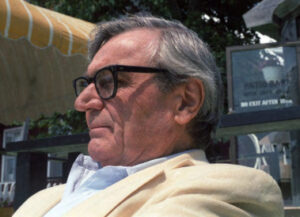Ernest Allen Connally (1921-1999)

Ernest Allen Connally served as the first Director of the National Park Service’s Office of Archaeology and Historic Preservation (OAHP) and was one of the individuals most responsible for developing many of our nation’s most significant and widely known public policies for preserving its historic places. He is also remembered for his international accomplishments working with the United Nations in developing protocols for protecting and conserving heritage properties worldwide. A proud fourth-generation Texan, Connally began studies in architecture at Rice University, served four years in World War II as a Lieutenant Colonel, and, afterwards, received a bachelor of architecture degree from the University of Texas in 1950. Upon completion of a doctorate in architectural history at Harvard University, Connally began a 15-year teaching career at Miami University, Ohio, Washington University in St. Louis, and at the University of Illinois, Urbana-Champaign. An immensely popular lecturer, one former student remembered that at the end of Connally’s first architectural history course at Illinois – the class rose in spontaneous ovation. During this period, Connally began what would be a lifelong relationship with the National Park Service – directing numerous Historic American Buildings Survey documentation teams at such NPS sites as Independence National Historical Park, the Andrew Johnson House, and on Cape Cod.
After passage of the National Historic Preservation Act in 1966, NPS Director George Hartzog appointed Dr. Connally to head the newly-created Office of Archaeology and Historic Preservation – carrying out the complex and as-yet untested mandates of the new law. There were no precedents and Connolly and his NPS colleagues moved cautiously ensuring the long-term viability and support of such NPS programs as the National Register of Historic Places, State Historic Preservation Offices, and the Section 106 review process. Over a period of 13 years, first as Director of OAHP and later as NPS Associate Director, Connally was the highest federal official specifically charged with the direction of the nation’s historic preservation programs.
The 1970’s saw increased U.S. involvement in international cooperation in heritage preservation. Connally served as a member of the “US / USSR Joint Working Group on the Urban Environment” and was responsible for sending American teams on study missions to the former Soviet Union. He was the first American to serve on the Executive Board of the Rome-based International Center for the Study of Preservation and the Restoration of Cultural Property (ICCROM) and served as second Secretary General of the International Council on Monuments and Sites (ICOMOS) of the United Nations. Dr. Connolly’s influence on the field and practice of heritage preservation cannot be overestimated – in the National Park Service, across the United State, and internationally. Looking back at the passage of the National Historic Preservation Act, Connolly commented, “That law vastly increased the scope of historic preservation as national public policy and correspondingly increased the duties of the National Park Service while offering it unprecedented opportunity.”
